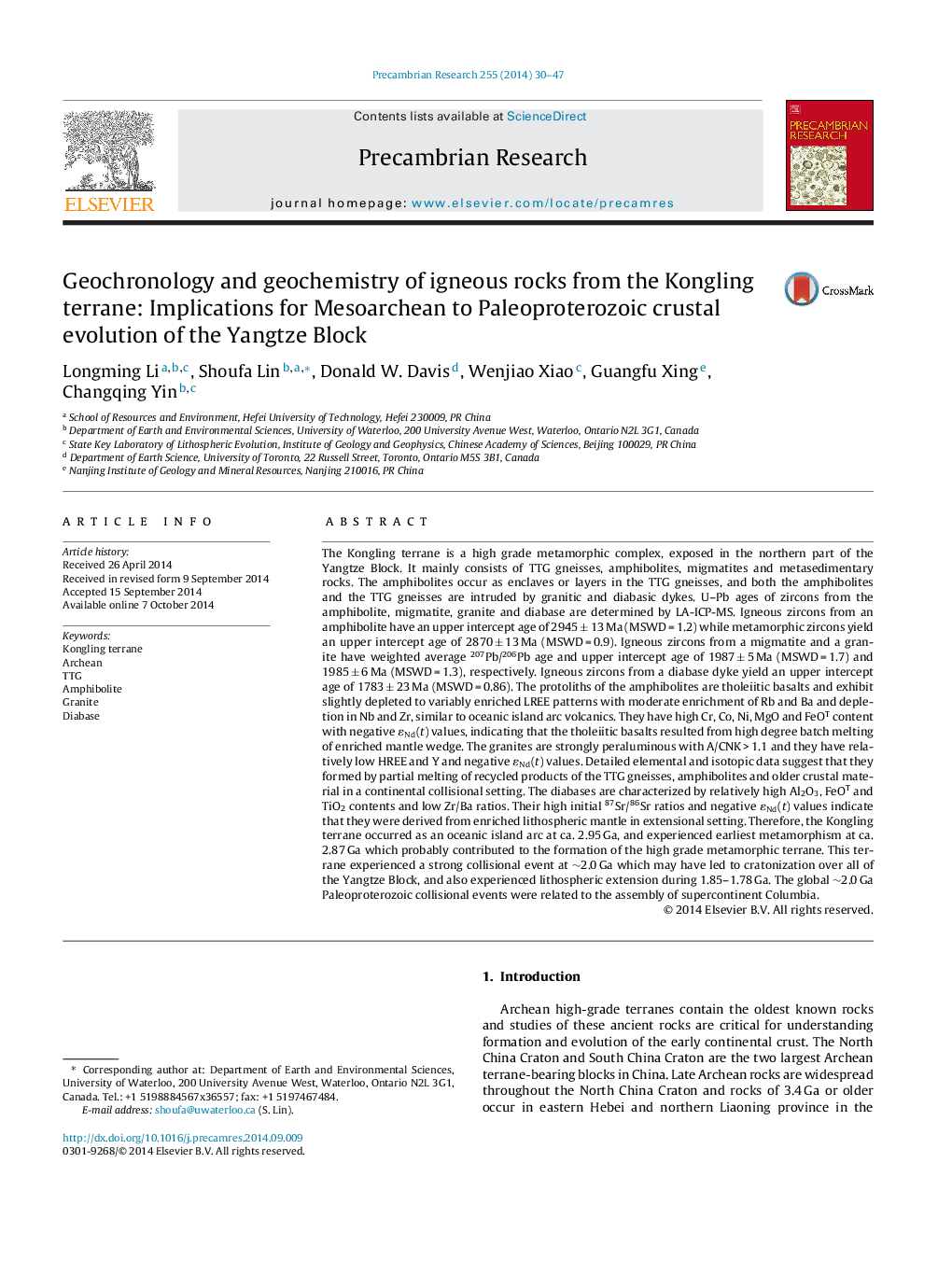| Article ID | Journal | Published Year | Pages | File Type |
|---|---|---|---|---|
| 4722774 | Precambrian Research | 2014 | 18 Pages |
•Protoliths of the Kongling amphibolites were formed at 2.94 Ga.•These tholeiitic basalts erupted in an oceanic island arc setting.•The Kongling terrane experienced a strong collisional event at ∼2.0 Ga.•2.0 Ga events were probably related to the assembly of Columbia supercontinent.•Lithosphere extension occurred in the Kongling terrane during ∼1.85–1.75 Ga.
The Kongling terrane is a high grade metamorphic complex, exposed in the northern part of the Yangtze Block. It mainly consists of TTG gneisses, amphibolites, migmatites and metasedimentary rocks. The amphibolites occur as enclaves or layers in the TTG gneisses, and both the amphibolites and the TTG gneisses are intruded by granitic and diabasic dykes. U–Pb ages of zircons from the amphibolite, migmatite, granite and diabase are determined by LA-ICP-MS. Igneous zircons from an amphibolite have an upper intercept age of 2945 ± 13 Ma (MSWD = 1.2) while metamorphic zircons yield an upper intercept age of 2870 ± 13 Ma (MSWD = 0.9). Igneous zircons from a migmatite and a granite have weighted average 207Pb/206Pb age and upper intercept age of 1987 ± 5 Ma (MSWD = 1.7) and 1985 ± 6 Ma (MSWD = 1.3), respectively. Igneous zircons from a diabase dyke yield an upper intercept age of 1783 ± 23 Ma (MSWD = 0.86). The protoliths of the amphibolites are tholeiitic basalts and exhibit slightly depleted to variably enriched LREE patterns with moderate enrichment of Rb and Ba and depletion in Nb and Zr, similar to oceanic island arc volcanics. They have high Cr, Co, Ni, MgO and FeOT content with negative ɛNd(t) values, indicating that the tholeiitic basalts resulted from high degree batch melting of enriched mantle wedge. The granites are strongly peraluminous with A/CNK > 1.1 and they have relatively low HREE and Y and negative ɛNd(t) values. Detailed elemental and isotopic data suggest that they formed by partial melting of recycled products of the TTG gneisses, amphibolites and older crustal material in a continental collisional setting. The diabases are characterized by relatively high Al2O3, FeOT and TiO2 contents and low Zr/Ba ratios. Their high initial 87Sr/86Sr ratios and negative ɛNd(t) values indicate that they were derived from enriched lithospheric mantle in extensional setting. Therefore, the Kongling terrane occurred as an oceanic island arc at ca. 2.95 Ga, and experienced earliest metamorphism at ca. 2.87 Ga which probably contributed to the formation of the high grade metamorphic terrane. This terrane experienced a strong collisional event at ∼2.0 Ga which may have led to cratonization over all of the Yangtze Block, and also experienced lithospheric extension during 1.85–1.78 Ga. The global ∼2.0 Ga Paleoproterozoic collisional events were related to the assembly of supercontinent Columbia.
